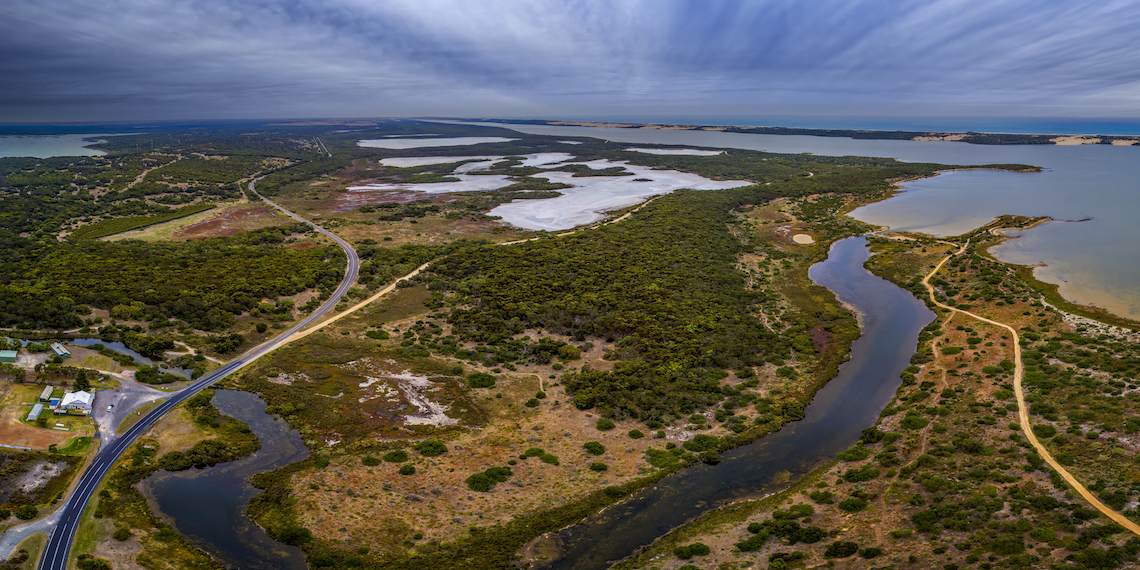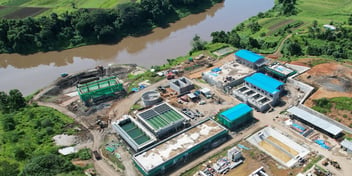Optimising ageing infrastructure with the power of data

Faced with ageing infrastructure, growing populations and sensitive environmental considerations, one South Australian council has recently transformed its approach to wastewater operations and maintenance with help from a leading water data science agency.
SpiralData took out the sustainability innovation accolade at the Amazon Web Services (AWS) awards for a project helping Alexandrina Council gain deeper visibility into wastewater data and optimise its operations.
Located across the Fleurieu Peninsula and Kangaroo Island, Alexandrina Council manages the region’s third-largest wastewater network, servicing about 10,000 customers in five regional townships – but populations, tourism and agriculture are growing.
In pursuit of applying agile technology for better data insights – and with the aim of transforming into a proactive, rather than reactive, service provider – the council started out by engaging SpiralData to establish a data strategy.
“We started working with Alexandrina Council on a data strategy a few years ago,” SpiralData CEO Kale Needham said.
“The initiative was led by them, as they knew they were a bit behind in terms of using data to drive decision making. Gary Lyons, the council’s manager of sustainable resources, has been very strategic in efforts to transform the council’s culture to become more proactive.”
Needham said the first step was to consider how data-based decisions could transform council’s operations, what the key gaps were in achieving those transformations and what a roadmap might look like.
“This was a key step in the process. The data strategy had to be aligned to their asset strategy. The council was in a challenging position; they needed to create change across a big service area with a small budget base,” he said.
But then, in 2021, Alexandrina Council’s challenges became more pronounced. It inherited an ageing vacuum sewer with no network monitoring, frequent valve malfunctions, heavy rainfall ingress and flooded lines.
Outdated and troublesome, the inherited sewer network is also located in an environmentally sensitive area – the Coorong, Lower Lakes, and Murray Mouth region, one of Australia’s most important wetland areas. SpiralData was engaged to help further.
“The success of these types of projects really depends on how progressive the client is and open to change. This was one of the key strengths of Alexandrina Council, in particular,” Needham said.
“Their inheritance of the vacuum sewer was a key trigger. They realised they had an opportunity to invest in better solutions and they came on the journey with us to start getting ahead of some of their network issues.”
Ready, set, sprint
Needham said that while a more traditional approach to fixing the issues with the vacuum sewer would require a network audit and likely result in expensive capital works, Alexandrina Council instead decided to deploy a sensor fleet throughout the network.
“They had help from a telemetry provider to install sensors and start collecting data, and as soon as they had that data they got us involved to look at what was going on. We took over with our process to help them move towards a proactive approach,” he said.
“To start with we ran a co-design workshop. This is something we have been doing with our customers for over five years now. We do really complex work and co-design is a great way to combine the expertise of the customer with our specific data science expertise.
“It helps us move towards a much better understanding of the problem and therefore a better solution. We also operate in an agile framework, which means we run a series of sprints, focused on a specific problem set under a specific period of time.”
Working together, SpiralData and Alexandrina Council came up with three prioritised problems that would add significant value if they could be solved, including rainwater ingress, vacuum sewer valve optimisation and valve integrity modelling for targeted maintenance efforts.
“In the first sprint we built an algorithm that correlated a rainfall event to the activity we could see coming through the sensors. It basically gave us a hit list of areas in the network that were statistically most likely to suffer inundation,” he said.
“Operators went out and took a look at a couple of the areas we had identified based on our algorithm. While some people were sceptical, the first inspection showed that a roof had been plumbed illegally into the sewer system, and that this type of thing had happened quite a bit.
“The outputs from our algorithm provided 100% accuracy. It gave them significant insight and confidence in terms of where to triage these problems. Instead of just driving around looking for where rainfall may potentially go in, which is non-targeted and inefficient.”
Needham said the second sprint was around sewer valve optimisation, with SpiralData building a mathematical physics model that showed the optimum time each valve should be open for network efficiency.
“Overall, there was a 20% efficiency gain for the system without having to spend a tonne of money digging to check each valve,” he said.
“But further, because the sewer system was such old infrastructure, they didn’t have any continuity of information about the system, or a clear understanding of valve integrity. And Alexandrina Council gave us the challenge: is it possible to measure valve integrity through data? This was our third sprint.”
SprialData conducted applied R&D, attaching an accelerometer to the top of the metal casing of the valve, Needham said.
“We could pick up the signal of the vibrations through that valve casing as the wastewater is flowing through. With some experimental controls, we could tell whether there is wastewater flowing across the valve when it’s open and not when it’s closed,” he said.
“With each test taking just 20 minutes, Alexandrina Council is able to go out and validate valve integrity, as opposed to spending tens of thousands of dollars to dig it all up.”
Key to success
“We are an up-and-coming data science practice that specialises in the water industry and we are super proud that we took out the sustainability award and were a finalist in the IoT and AIML award also,” Needham said. And, while the project has achieved excellent results, he said the benefits of machine learning continue to compound.
“Across every sprint, we leveraged the power of sophisticated algorithms and data science. This approach opens up possibilities for operational problem solving that have strategic and financial benefits,” he said.
“It has saved money that can now be applied to something else. It’s helped Alexandrina Council get ahead of the curve, instead of always being behind it.
“But the process also helps hugely with educating operations managers as they go. Through this process, they are better informed, they are better able to understand triage, so they are making better decisions.”
Needham said other key benefits offered by a data-driven approach lie in how quickly testing and problem solving can be deployed.
“We have our IoT-to-AI platform. We don’t have to liaise with customers six months ahead of time before we start solving their problems. In a few hours, our platform is stood up, ready to go and we can start testing data on day one. It is fast, secure and scalable,” he said.
“That is a significant competitive differentiation to the big guys, who lay on a lot of bodyshop work before they can even get started. Our AI platform is now used by SA Water, the SA Department for Environment and Water, and Alexandrina Council.
“Our next step is to work with interstate utilities. We are in the process of showcasing the value of our platform, which has been built for the water industry across a range of use cases.”



